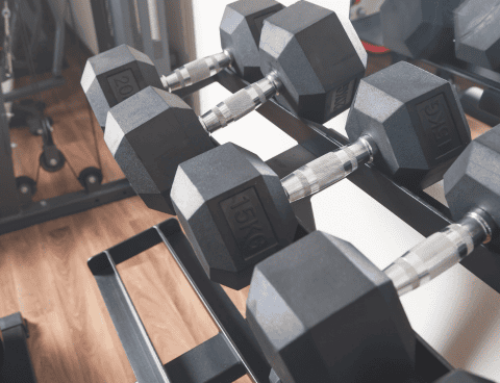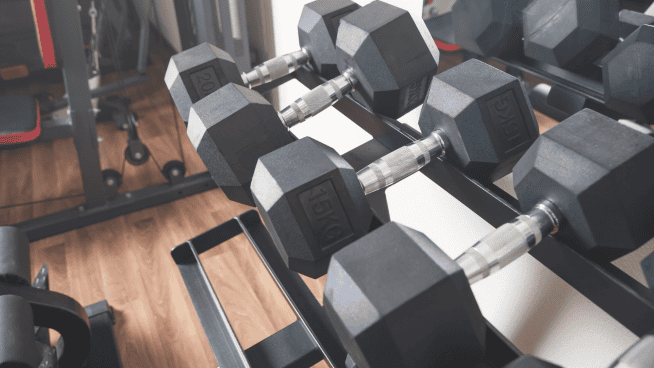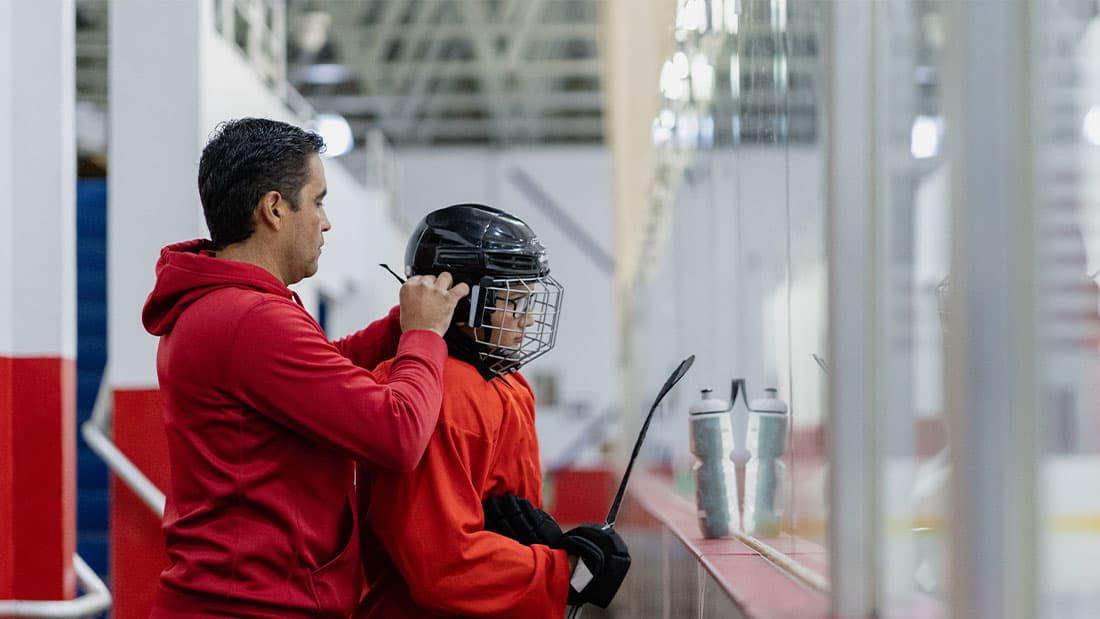Master the Deadlift, Part 3: Deadlift Tips
In Parts 1 and 2 of this series, we discussed the performance benefits of the Deadlift and provided detailed instruction on how to perform the Conventional and Sumo versions. Now, we’ll go over the particulars of the Deadlift—including grips, hand placement, shoes and sets/reps—so you can get the most out of this incredibly beneficial exercise.
A few different grips work for all versions of the Deadlift. It’s up to you to decide which one you like best.
The standard grip for any Deadlift is referred to as the alternating grip. The palm of one hand faces toward you and the other faces away from you (personal preference as to which hand). Take care when training with this grip to prevent uneven development of the upper body by using the setup opposite from your normal alternating grip.
The overhand grip is another common option. In this grip, both of your palms face your body. This grip is effective, but it can be difficult to hold heavy loads.
Finally, the most difficult—but most beneficial—variation is the hook grip in the overhand position. With your palms facing you, wrap your thumbs around the bar. Then wrap the four fingers of each hand around the bar and your thumbs. This allows for better control of heavier weights, but it can be very uncomfortable.
Now, what about straps? I don’t believe athletes should use them. Unless you have a medical condition that prevents you from holding a bar, leave the straps in your locker. A strong grip is vital—absolutely necessary—for almost every athlete in just about every sport. Plus, if you cannot hold on to the weight, you have no business trying to lift it.
Hand Placement
Keeping your hands in the right position and location on the bar will allow you to maintain control of the weight and generate the most force. This will help you get the most out of the lift, while keeping you injury-free.
With the Conventional Deadlift, your hands should be placed just outside of, but not touching, your legs. Going wider than this spreads your pulling force over a broader area and takes away from your power.
When performing the Sumo Deadlift, your hands need to be placed inside your legs, directly below your shoulders. If you go much narrower, the pulling force will be in too small an area, causing the bar to wobble and you to lose control.
Shoes
Make sure to wear non-slip shoes with flat bottoms and supportive sides to provide a solid foundation. The last thing you want is to have your shoes blow their sides or slip. Also, stay away from athletic shoes that have squishy bottoms or that prop your heel up.
With the Conventional Deadlift, the force generated on the feet goes straight down, so you need a solid footing. The Sumo Deadlift creates force on the feet that travels more outward, from the side of the feet and forward to the toes. Keep this in mind when picking out shoes.
Reps and Sets
Keep in mind that the Deadlift is primarily a strength movement; it is not meant to be high-repetition, muscular-endurance exercise. Trying to hit 20 reps will do nothing but set your progress back.
Due to the mechanics of the lift, muscular failure and fatigue occur quickly. If performed to fatigue, your form will falter and you will be at risk for injury. Therefore, focus on low reps performed with heavy loads. Depending on your training cycle, reps should be between one and six, and weight should stay between 85 to 95 percent of your one-rep max.
Finally, make sure to perform the exercise at or near the beginning of your workout so your muscles are not exhausted.
Photo: fitnessscrolls.com
Michael Palmieri is the president and founder of The Institute of Sport Science & Athletic Conditioning. He has lectured for several major organizations and associations and written numerous articles for multiple media outlets. He currently serves as state chairman for the National Strength & Conditioning Association, a state director for the North American Strongman Corporation and a judge for the International Natural Bodybuilding Association. A former powerlifter, Palmieri has been in the industry for more than 20 years. He is currently pursuing his master’s degree in biomechanics at UNLV.
RECOMMENDED FOR YOU
MOST POPULAR
Master the Deadlift, Part 3: Deadlift Tips
In Parts 1 and 2 of this series, we discussed the performance benefits of the Deadlift and provided detailed instruction on how to perform the Conventional and Sumo versions. Now, we’ll go over the particulars of the Deadlift—including grips, hand placement, shoes and sets/reps—so you can get the most out of this incredibly beneficial exercise.
A few different grips work for all versions of the Deadlift. It’s up to you to decide which one you like best.
The standard grip for any Deadlift is referred to as the alternating grip. The palm of one hand faces toward you and the other faces away from you (personal preference as to which hand). Take care when training with this grip to prevent uneven development of the upper body by using the setup opposite from your normal alternating grip.
The overhand grip is another common option. In this grip, both of your palms face your body. This grip is effective, but it can be difficult to hold heavy loads.
Finally, the most difficult—but most beneficial—variation is the hook grip in the overhand position. With your palms facing you, wrap your thumbs around the bar. Then wrap the four fingers of each hand around the bar and your thumbs. This allows for better control of heavier weights, but it can be very uncomfortable.
Now, what about straps? I don’t believe athletes should use them. Unless you have a medical condition that prevents you from holding a bar, leave the straps in your locker. A strong grip is vital—absolutely necessary—for almost every athlete in just about every sport. Plus, if you cannot hold on to the weight, you have no business trying to lift it.
Hand Placement
Keeping your hands in the right position and location on the bar will allow you to maintain control of the weight and generate the most force. This will help you get the most out of the lift, while keeping you injury-free.
With the Conventional Deadlift, your hands should be placed just outside of, but not touching, your legs. Going wider than this spreads your pulling force over a broader area and takes away from your power.
When performing the Sumo Deadlift, your hands need to be placed inside your legs, directly below your shoulders. If you go much narrower, the pulling force will be in too small an area, causing the bar to wobble and you to lose control.
Shoes
Make sure to wear non-slip shoes with flat bottoms and supportive sides to provide a solid foundation. The last thing you want is to have your shoes blow their sides or slip. Also, stay away from athletic shoes that have squishy bottoms or that prop your heel up.
With the Conventional Deadlift, the force generated on the feet goes straight down, so you need a solid footing. The Sumo Deadlift creates force on the feet that travels more outward, from the side of the feet and forward to the toes. Keep this in mind when picking out shoes.
Reps and Sets
Keep in mind that the Deadlift is primarily a strength movement; it is not meant to be high-repetition, muscular-endurance exercise. Trying to hit 20 reps will do nothing but set your progress back.
Due to the mechanics of the lift, muscular failure and fatigue occur quickly. If performed to fatigue, your form will falter and you will be at risk for injury. Therefore, focus on low reps performed with heavy loads. Depending on your training cycle, reps should be between one and six, and weight should stay between 85 to 95 percent of your one-rep max.
Finally, make sure to perform the exercise at or near the beginning of your workout so your muscles are not exhausted.
Photo: fitnessscrolls.com
Michael Palmieri is the president and founder of The Institute of Sport Science & Athletic Conditioning. He has lectured for several major organizations and associations and written numerous articles for multiple media outlets. He currently serves as state chairman for the National Strength & Conditioning Association, a state director for the North American Strongman Corporation and a judge for the International Natural Bodybuilding Association. A former powerlifter, Palmieri has been in the industry for more than 20 years. He is currently pursuing his master’s degree in biomechanics at UNLV.












